-
 Bitcoin
Bitcoin $105,953.9980
3.06% -
 Ethereum
Ethereum $2,445.3292
6.68% -
 Tether USDt
Tether USDt $1.0006
-0.03% -
 XRP
XRP $2.1968
7.03% -
 BNB
BNB $643.2903
2.13% -
 Solana
Solana $144.2799
3.82% -
 USDC
USDC $1.0000
-0.03% -
 TRON
TRON $0.2739
0.49% -
 Dogecoin
Dogecoin $0.1642
4.47% -
 Cardano
Cardano $0.5834
5.49% -
 Hyperliquid
Hyperliquid $38.0741
2.80% -
 Sui
Sui $2.7741
7.56% -
 Chainlink
Chainlink $13.4107
11.26% -
 Bitcoin Cash
Bitcoin Cash $450.4828
-0.61% -
 UNUS SED LEO
UNUS SED LEO $9.1301
0.64% -
 Stellar
Stellar $0.2476
5.49% -
 Avalanche
Avalanche $18.0637
5.09% -
 Toncoin
Toncoin $2.9066
2.43% -
 Shiba Inu
Shiba Inu $0.0...01160
4.01% -
 Hedera
Hedera $0.1527
8.00% -
 Litecoin
Litecoin $84.6122
2.37% -
 Monero
Monero $317.6076
5.76% -
 Ethena USDe
Ethena USDe $1.0008
0.02% -
 Polkadot
Polkadot $3.4519
5.27% -
 Dai
Dai $1.0000
-0.03% -
 Bitget Token
Bitget Token $4.2835
5.62% -
 Uniswap
Uniswap $7.0443
9.78% -
 Pepe
Pepe $0.0...09964
7.41% -
 Pi
Pi $0.5391
4.64% -
 Aave
Aave $264.1743
11.26%
Must I clear the position when the weekly KDJ crosses at a high level? Are there differences in different markets?
A high-level weekly KDJ cross in crypto may signal potential bearish momentum, but traders should consider market context, trend strength, and risk tolerance before exiting positions.
Jun 24, 2025 at 10:56 pm
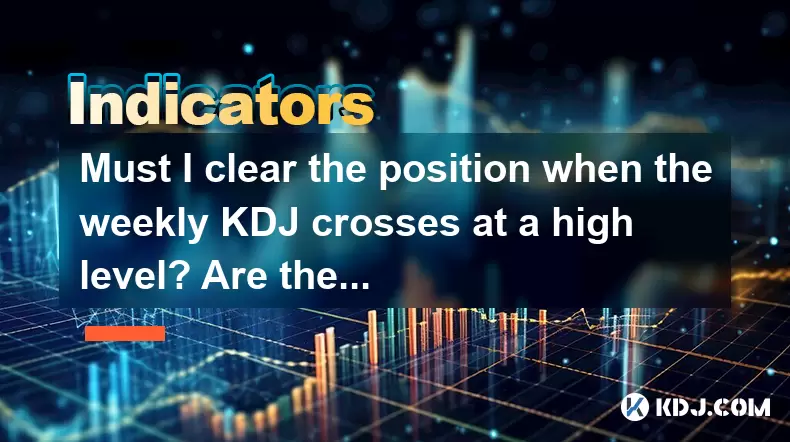
Understanding the Weekly KDJ Indicator
The KDJ indicator, also known as the stochastic oscillator, is a momentum-based technical analysis tool used to identify overbought or oversold conditions in financial markets. It consists of three lines: the %K line (fast stochastic), the %D line (slow stochastic), and the %J line (divergence value). When these lines intersect at a high level on the weekly chart, it often signals potential bearish momentum.
In cryptocurrency trading, the weekly KDJ crossing at a high level is seen by many traders as a possible reversal signal. However, whether one must immediately clear their position depends on several factors including market context, trend strength, and personal risk tolerance.
What Does a High-Level Weekly KDJ Cross Indicate?
When the %K line crosses above the %D line at a high level (typically above 80), it suggests that the asset may be overbought and could experience a pullback. This is especially significant if the cross occurs after a prolonged uptrend.
- Strong resistance levels nearby can amplify this signal.
- High volume during the cross might indicate increased selling pressure.
- Divergence between price and KDJ could confirm weakening momentum.
However, in fast-moving crypto markets, such signals are not always reliable. For example, during strong bull runs, prices can remain overbought for extended periods without immediate correction.
Should You Clear Your Position Immediately?
There's no one-size-fits-all answer. Some traders choose to partially close positions when they see a high-level KDJ cross on the weekly chart, while others wait for additional confirmation from other indicators like RSI or MACD.
Here are some considerations:
- Risk management strategy: Traders with tight stop-loss rules might prefer to exit partially or fully.
- Market sentiment: If overall sentiment remains bullish, the signal may be less compelling.
- Historical performance: In some cryptocurrencies like Bitcoin or Ethereum, high-level KDJ crosses have historically led to corrections, but not always immediately.
It’s crucial to assess your entry point, profit target, and acceptable drawdown before making any decision.
Differences Across Cryptocurrency Markets
Not all cryptocurrencies react the same way to technical indicators. The behavior of altcoins versus major coins like BTC and ETH can differ significantly due to varying liquidity, volatility, and market influence.
- Bitcoin and Ethereum tend to follow broader macroeconomic trends and exhibit more predictable technical behavior.
- Small-cap altcoins can show false KDJ signals due to manipulation or low trading volumes.
- Stablecoins and non-volatile tokens usually don’t generate meaningful KDJ crosses due to lack of price movement.
Therefore, when analyzing a weekly KDJ cross, it’s essential to consider the specific characteristics of the market you're trading.
How to Approach Weekly KDJ Signals in Practice
If you’re using the weekly KDJ to guide your trading decisions, here are actionable steps to consider:
- Verify the timeframe: Ensure you’re looking at the weekly chart and not daily or hourly.
- Check the KDJ parameters: The default setting is often 9-period, but adjustments can affect sensitivity.
- Observe the %J line: A sharp rise or fall in %J may suggest divergence or imminent reversal.
- Combine with support/resistance levels: A KDJ cross near key resistance strengthens the bearish case.
- Use candlestick patterns: Engulfing candles or shooting stars around the cross can enhance the signal.
By integrating multiple tools, you reduce the likelihood of acting on a false signal.
Frequently Asked Questions
Q1: Can I use the weekly KDJ in intraday trading?
No, the weekly KDJ is designed for long-term trend analysis and should not be used directly for short-term or intraday trades. Its signals are slower and meant for strategic positioning rather than quick entries or exits.
Q2: What if the KDJ crosses at a high level but the price keeps rising?
This situation is called a "false signal" or "price continuation". It’s common in strong bull markets where overbought conditions persist. In such cases, trailing stops or dynamic support monitoring becomes more effective than relying solely on KDJ.
Q3: How do I adjust KDJ settings for different cryptocurrencies?
You can experiment with the period length—shorter periods make the indicator more sensitive, longer ones smoother. However, changing settings too frequently can lead to inconsistent results. Stick to a consistent setup across similar assets unless backtesting shows better outcomes with changes.
Q4: Is the weekly KDJ more reliable in bull or bear markets?
The weekly KDJ tends to be more reliable in bear markets or sideways ranges because overbought/oversold signals align more closely with actual reversals. In bull markets, it may give premature sell signals that result in missed gains if not confirmed by other tools.
Disclaimer:info@kdj.com
The information provided is not trading advice. kdj.com does not assume any responsibility for any investments made based on the information provided in this article. Cryptocurrencies are highly volatile and it is highly recommended that you invest with caution after thorough research!
If you believe that the content used on this website infringes your copyright, please contact us immediately (info@kdj.com) and we will delete it promptly.
- Stablecoins, Blockchain Games, and NxtNexus: A Deep Dive
- 2025-06-25 10:25:13
- Children: Yesterday, Today, and Tomorrow's Promise
- 2025-06-25 10:45:13
- £1 Coin: Valuable Finds and Expert Tips for Collectors
- 2025-06-25 11:05:13
- £1 Coin, Mistake, Worth £500: Are You Sitting on a Goldmine?
- 2025-06-25 11:25:12
- Spot the Mistake: Is Your £1 Coin Worth £500?
- 2025-06-25 11:45:13
- XRP, Ripple, Legal Saga: Navigating Uncertainty with Stablecoin Strategies
- 2025-06-25 10:52:16
Related knowledge
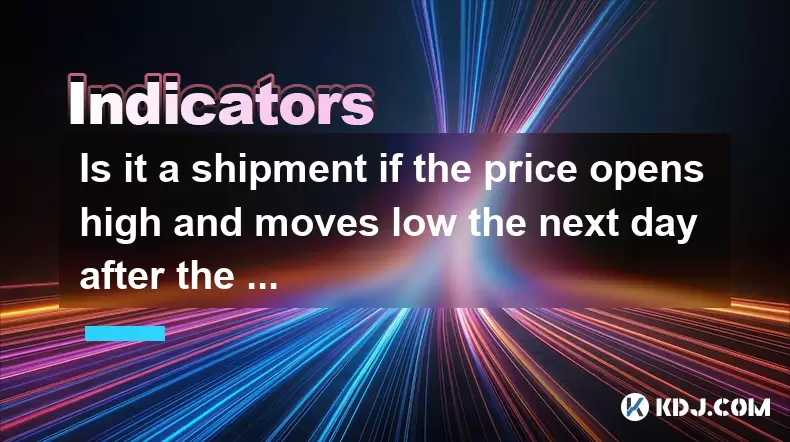
Is it a shipment if the price opens high and moves low the next day after the daily limit with huge volume?
Jun 25,2025 at 12:56pm
Understanding the Concept of a Shipment in Cryptocurrency TradingIn cryptocurrency trading, the term shipment refers to a scenario where large volumes of an asset are sold off rapidly, often leading to a significant price drop. This is typically associated with whale activity or coordinated selling by major holders. When traders observe certain patterns...
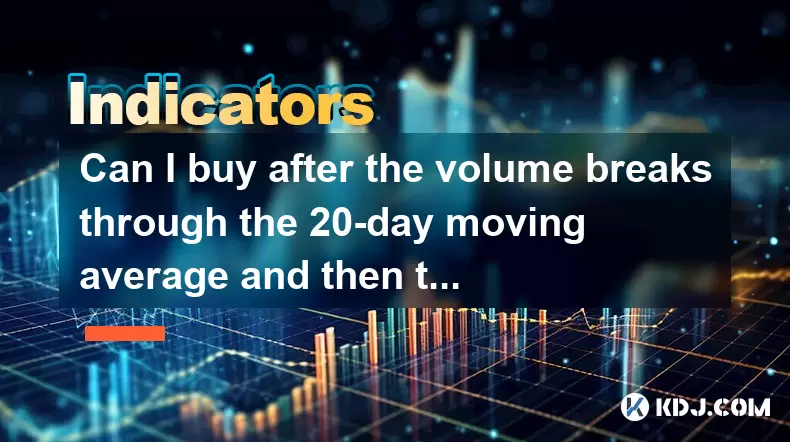
Can I buy after the volume breaks through the 20-day moving average and then the volume shrinks and then the callback is pulled back?
Jun 25,2025 at 12:00pm
Understanding Volume and Moving Averages in Cryptocurrency TradingIn the world of cryptocurrency trading, volume and moving averages are two critical indicators that traders rely on to make informed decisions. The 20-day moving average (MA) is a popular tool used to identify trends and potential entry or exit points. When volume breaks through this aver...
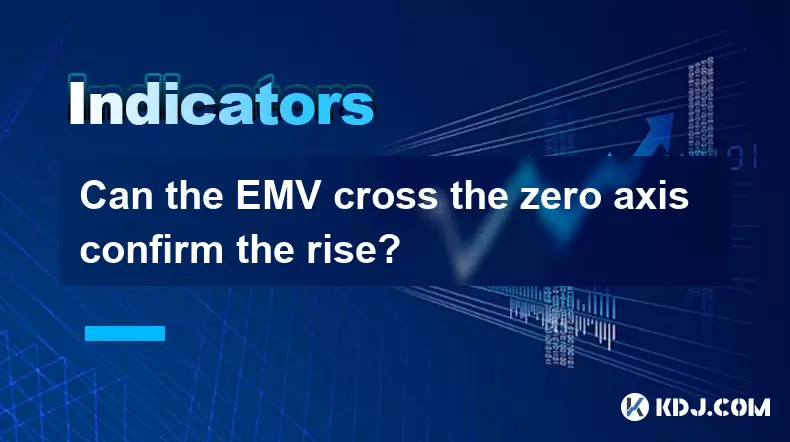
Can the EMV cross the zero axis confirm the rise?
Jun 25,2025 at 11:14am
Understanding the EMV Indicator in Cryptocurrency TradingThe Ease of Movement Value (EMV) is a technical analysis indicator commonly used by traders to assess the relationship between price and volume. In the cryptocurrency market, where volatility is high and trends can reverse quickly, understanding how to interpret EMV becomes crucial for making info...
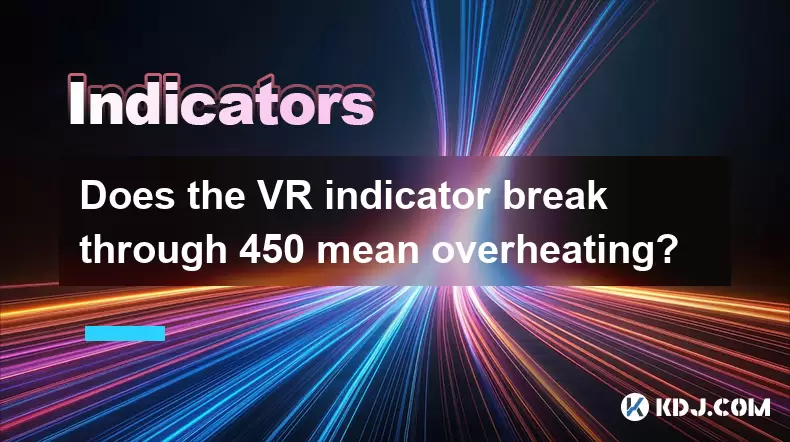
Does the VR indicator break through 450 mean overheating?
Jun 25,2025 at 10:15am
Understanding the VR Indicator in Cryptocurrency AnalysisThe VR indicator, or Volume Ratio, is a technical analysis tool used to assess buying and selling pressure by comparing the volume of up days to down days over a specified period. In cryptocurrency trading, where volatility is high and sentiment shifts rapidly, the VR indicator helps traders ident...

Should we exit the market when the TSI indicator forms a head and shoulders top pattern in the overbought zone?
Jun 25,2025 at 10:50am
Understanding the TSI Indicator and Its Relevance in Cryptocurrency TradingThe True Strength Index (TSI) is a momentum oscillator commonly used by traders to identify overbought or oversold conditions in financial markets, including cryptocurrencies. It is calculated using double smoothing of price changes, which helps filter out noise and provides more...
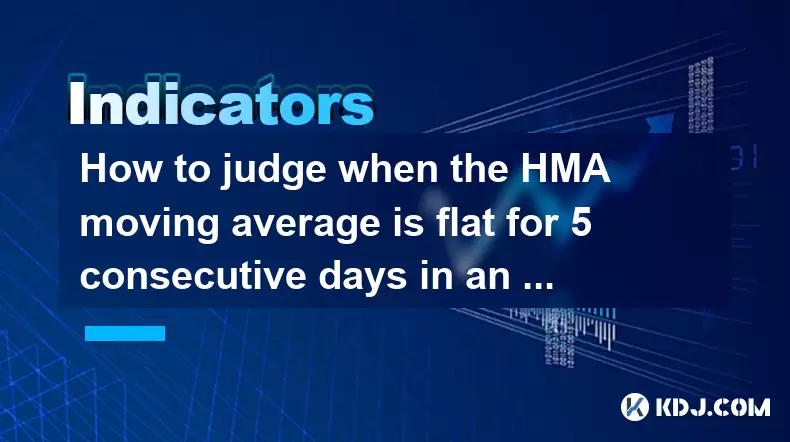
How to judge when the HMA moving average is flat for 5 consecutive days in an upward trend?
Jun 25,2025 at 12:29pm
Understanding the HMA Moving AverageThe Hull Moving Average (HMA) is a popular technical indicator used in cryptocurrency trading to identify trend direction and potential reversals. Unlike traditional moving averages, such as the Simple Moving Average (SMA) or Exponential Moving Average (EMA), the HMA reduces lag by applying weighted calculations acros...

Is it a shipment if the price opens high and moves low the next day after the daily limit with huge volume?
Jun 25,2025 at 12:56pm
Understanding the Concept of a Shipment in Cryptocurrency TradingIn cryptocurrency trading, the term shipment refers to a scenario where large volumes of an asset are sold off rapidly, often leading to a significant price drop. This is typically associated with whale activity or coordinated selling by major holders. When traders observe certain patterns...

Can I buy after the volume breaks through the 20-day moving average and then the volume shrinks and then the callback is pulled back?
Jun 25,2025 at 12:00pm
Understanding Volume and Moving Averages in Cryptocurrency TradingIn the world of cryptocurrency trading, volume and moving averages are two critical indicators that traders rely on to make informed decisions. The 20-day moving average (MA) is a popular tool used to identify trends and potential entry or exit points. When volume breaks through this aver...

Can the EMV cross the zero axis confirm the rise?
Jun 25,2025 at 11:14am
Understanding the EMV Indicator in Cryptocurrency TradingThe Ease of Movement Value (EMV) is a technical analysis indicator commonly used by traders to assess the relationship between price and volume. In the cryptocurrency market, where volatility is high and trends can reverse quickly, understanding how to interpret EMV becomes crucial for making info...

Does the VR indicator break through 450 mean overheating?
Jun 25,2025 at 10:15am
Understanding the VR Indicator in Cryptocurrency AnalysisThe VR indicator, or Volume Ratio, is a technical analysis tool used to assess buying and selling pressure by comparing the volume of up days to down days over a specified period. In cryptocurrency trading, where volatility is high and sentiment shifts rapidly, the VR indicator helps traders ident...

Should we exit the market when the TSI indicator forms a head and shoulders top pattern in the overbought zone?
Jun 25,2025 at 10:50am
Understanding the TSI Indicator and Its Relevance in Cryptocurrency TradingThe True Strength Index (TSI) is a momentum oscillator commonly used by traders to identify overbought or oversold conditions in financial markets, including cryptocurrencies. It is calculated using double smoothing of price changes, which helps filter out noise and provides more...

How to judge when the HMA moving average is flat for 5 consecutive days in an upward trend?
Jun 25,2025 at 12:29pm
Understanding the HMA Moving AverageThe Hull Moving Average (HMA) is a popular technical indicator used in cryptocurrency trading to identify trend direction and potential reversals. Unlike traditional moving averages, such as the Simple Moving Average (SMA) or Exponential Moving Average (EMA), the HMA reduces lag by applying weighted calculations acros...
See all articles
























































































